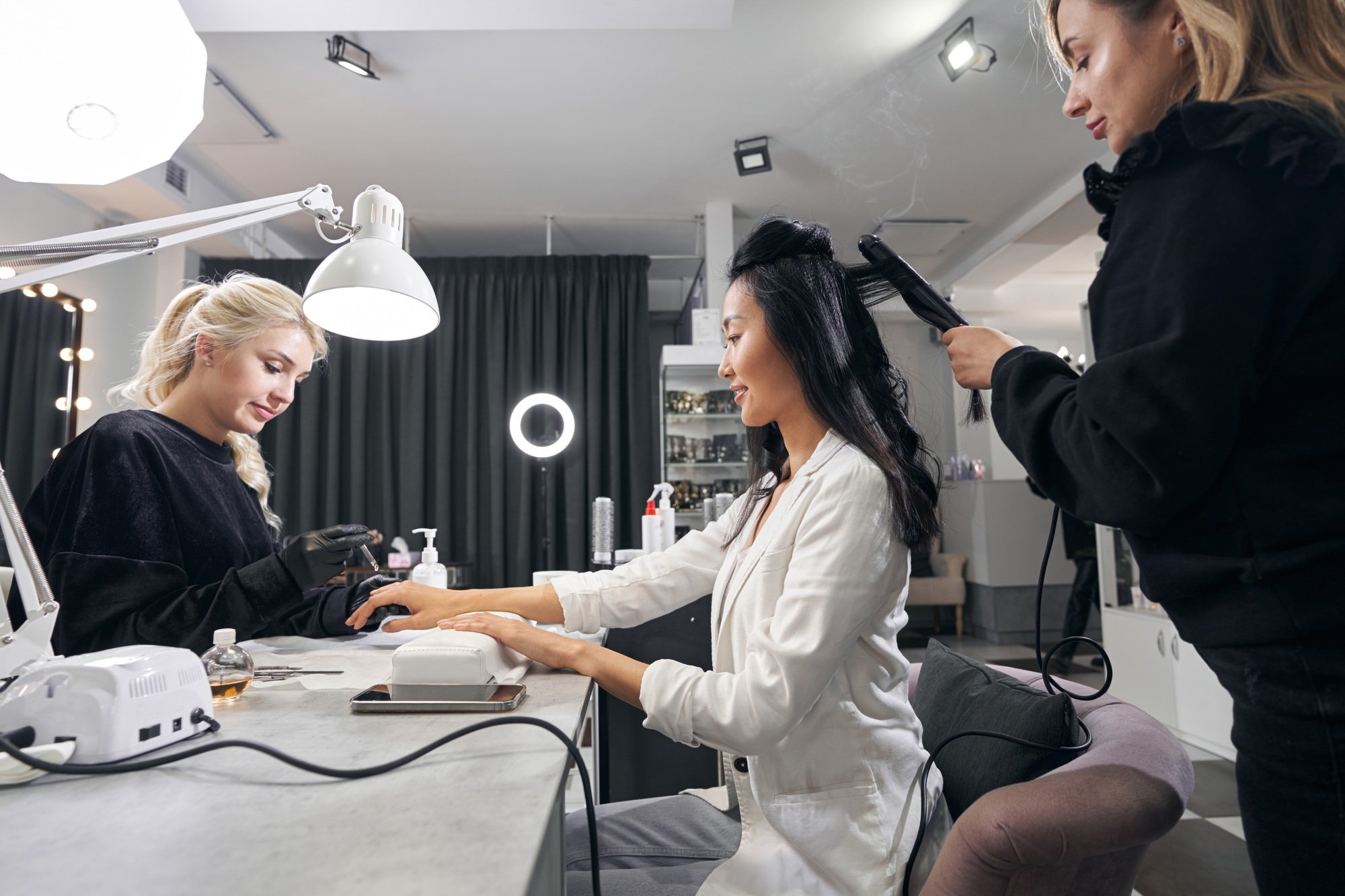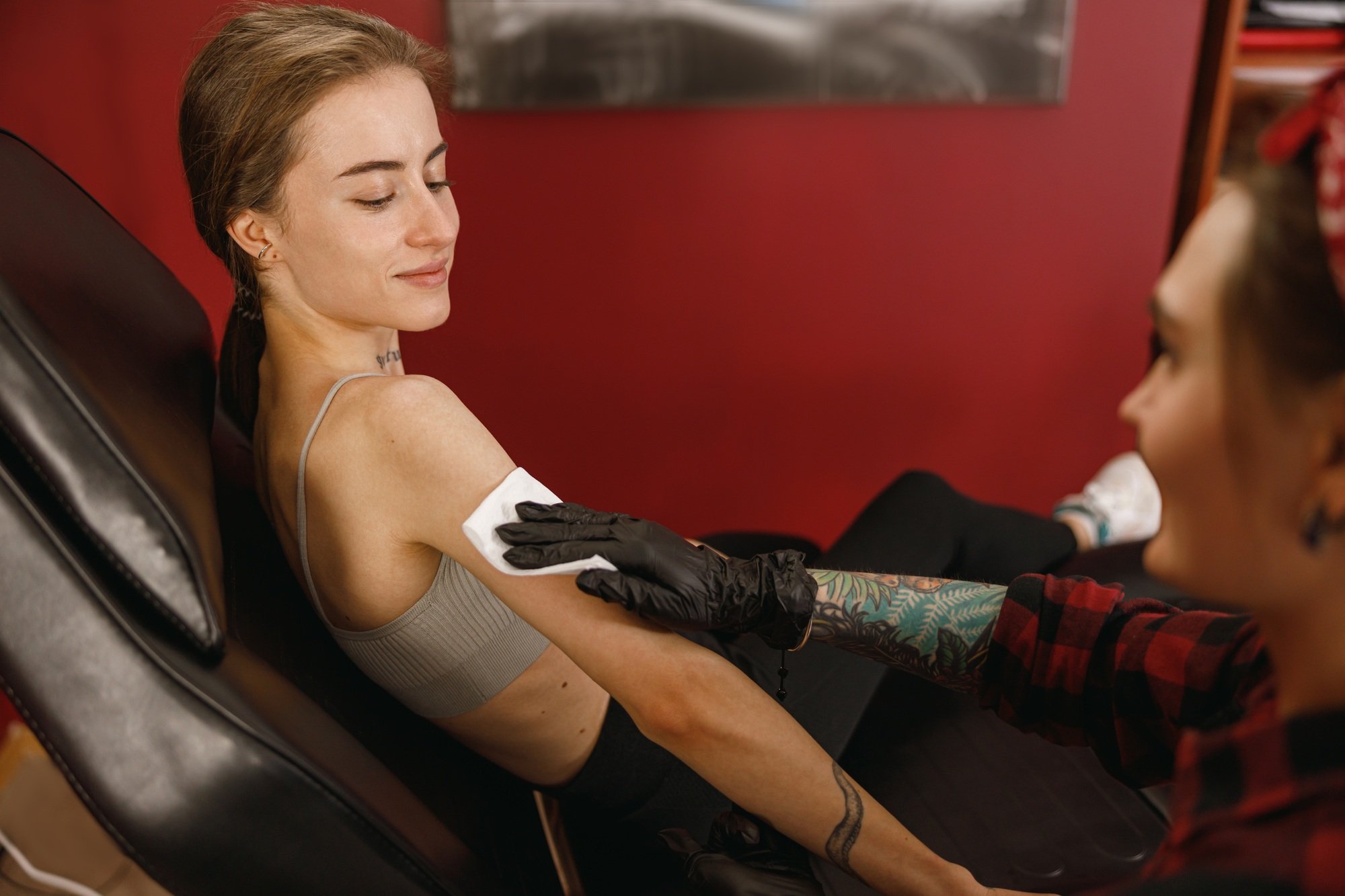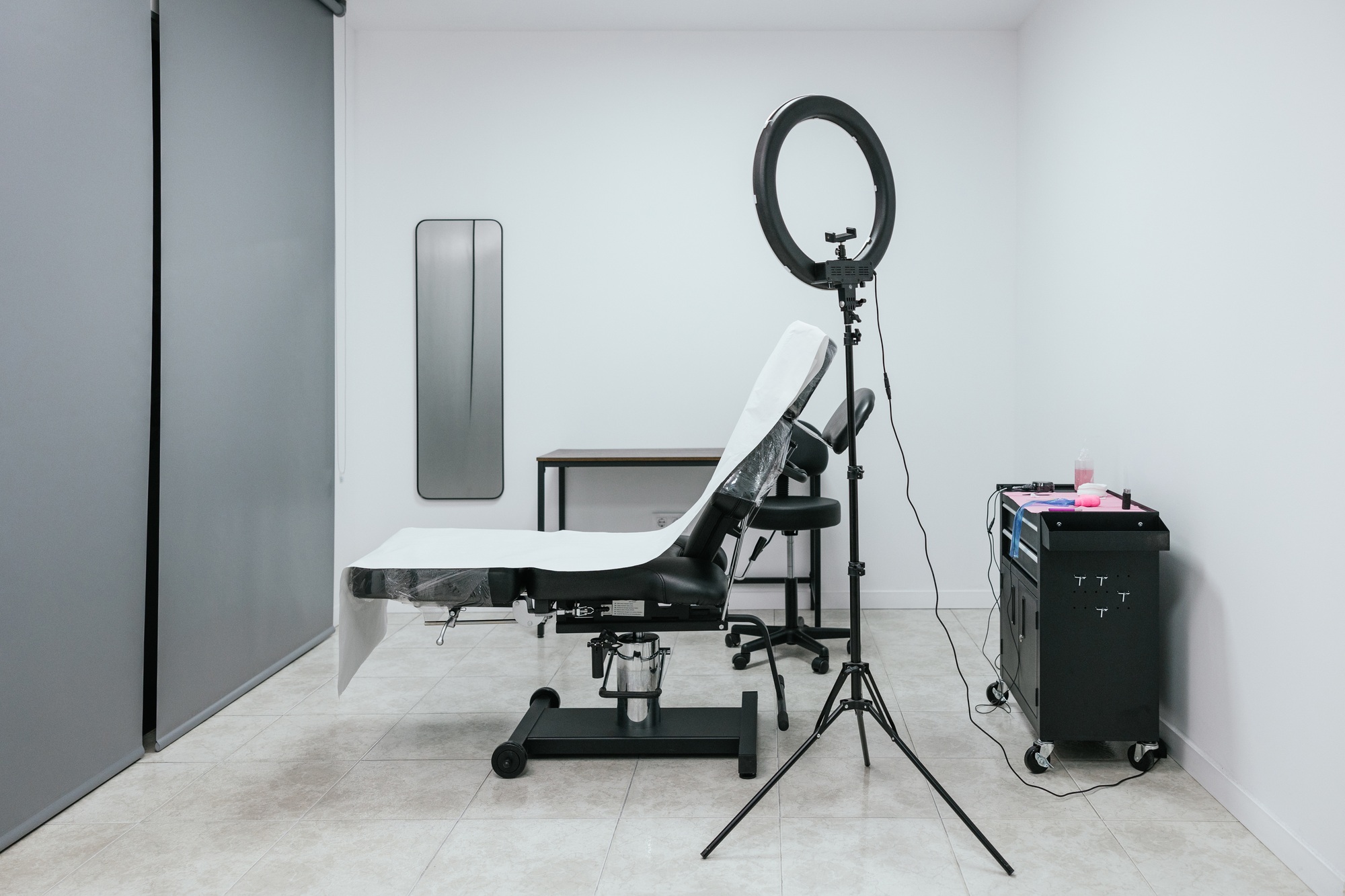Key Takeaways

- Understand Your Niche: Identify which type of parlor business (nail salon, hair studio, beauty spa, barber shop) aligns with your skills and interests to carve out your market space.
- Conduct Market Research: Know your target audience’s demographics, preferences, and spending habits to tailor your services and marketing strategies effectively.
- Create a Comprehensive Business Plan: Outline your salon concept, services, financial projections, and marketing strategies, which are crucial for attracting investors and guiding your business decisions.
- Navigate Legal Requirements: Obtain necessary business licenses, permits, and ensure compliance with health and safety regulations to establish a legitimate operation.
- Choose the Right Location and Design: Select a location that maximizes accessibility and visibility, and design an inviting space that enhances client comfort and satisfaction.
- Implement Effective Marketing Strategies: Build a strong brand presence online, utilize social media, and apply SEO techniques to attract clients and grow your parlor business.
Starting a parlor business can be an exciting venture that taps into your passion for beauty and self-care. Whether you envision a cozy nail salon or a trendy hair studio, the potential for creativity and connection with clients is immense. With the right approach and a solid plan, you can transform your dream into a thriving reality.
In this guide, you’ll discover essential steps to kickstart your parlor business. From understanding your target market to navigating legal requirements, each step is crucial in setting a strong foundation. Get ready to explore the world of beauty entrepreneurship and turn your vision into a successful enterprise.
Understanding the Parlor Business

The parlor business presents various opportunities for entrepreneurs. Understanding the key components helps you lay a foundation for your small business.
Types of Parlor Businesses
- Nail Salons: Specializing in manicures, pedicures, and nail art, nail salons cater to a diverse clientele.
- Hair Studios: Offering haircuts, styling, and color services, hair studios focus on enhancing clients’ personal styles.
- Beauty Spas: Providing skin treatments, massages, and wellness services, beauty spas target clients seeking relaxation and rejuvenation.
- Barber Shops: Tailoring services for men, barber shops deliver haircuts, shaves, and grooming.
Starting a business in any of these categories allows you to choose your niche based on skills and interests.
Market Demand and Trends
The demand for beauty services continues to grow, driven by trends promoting self-care and personal grooming.
- Rising Interest in Self-Care: More consumers prioritize self-care routines, fueling interest in parlor services.
- Social Media Influence: Online platforms boost visibility for beauty trends and services, attracting new clients.
- Sustainable Practices: Eco-friendly products and services gain popularity, providing a competitive edge.
Staying informed about these trends positions you to effectively meet market needs in your startup.
Business Planning

Business planning is vital for your parlor business success. Thoughtful planning lays the groundwork for a solid startup strategy, enabling you to navigate the competitive beauty industry effectively.
Writing a Business Plan
Writing a comprehensive business plan is essential for any small business. Your plan should outline your salon concept, services, financial projections, and marketing strategies. Include sections on your goals and mission statement, as these guide your business decisions. Research industry trends and competitor offerings to demonstrate viability. A well-crafted plan attracts potential investors or lenders, providing you with the necessary funds to launch your startup.
Identifying Your Target Audience
Identifying your target audience helps tailor your services to meet client needs. Conduct market research to understand demographics, preferences, and spending habits relevant to your parlor services. For instance, consider if your clientele includes young adults seeking trendy hairstyles or professionals requiring quick grooming. This information guides your marketing efforts, service design, and pricing strategies, ensuring you effectively reach your specific audience.
Legal Requirements

Starting a parlor business involves understanding several legal requirements. These ensure compliance and establish a solid foundation for your small business.
Business Licensing and Permits
Obtain necessary business licenses and permits for your parlor. Register your business with the IRS to get an Employer Identification Number (EIN). This number is crucial for tax purposes. Apply for a business license specific to your state, as this is mandatory for legally operating your startup. If you plan to sell beauty products, acquire a resale permit. If you intend to operate under a name different from your registered business name, you’ll need a DBA (Doing Business As) license. These steps help you navigate the legal landscape of how to start a business effectively.
Health and Safety Regulations
Health and safety regulations are vital for your parlor. Familiarize yourself with state and local regulations regarding sanitation and hygiene. Ensure compliance with health standards to protect your clients and staff. This includes proper cleaning procedures, equipment sterilization, and providing a safe environment during services. Following these regulations not only enhances your business’s credibility but also contributes to long-term success in the beauty industry.
Location and Setup

Selecting the right location and designing your parlor space are critical steps in launching a successful small business in the beauty industry. The location influences client footfall and overall business performance.
Choosing the Right Location
Choosing a location involves several key factors:
- Accessibility: Ensure your parlor is accessible by car, public transportation, or walking, based on your target demographic. A great location fosters client retention and attracts new customers.
- Visibility: Look for spaces on busy streets or near shopping centers. High visibility increases walk-in traffic. However, consider your clientele; for instance, a spa may thrive in a quieter environment to provide clients with privacy.
- Competition Proximity: Evaluate the number of existing salons or similar businesses nearby. Too many competitors might saturate the market. Depending on your specific offerings, proximity to competition can either dilute or enhance your potential customer base.
Designing Your Parlor Space
Designing an inviting parlor space enhances client comfort and satisfaction. Consider these categories:
- Layout: Use open layouts for nail and hair services for accessibility. Ensure workstations remain organized and that there’s enough room for staff and clients to move around easily.
- Ambiance: Incorporate calming colors, relaxing music, and suitable lighting to create a soothing experience. The ambiance significantly impacts clients’ perceptions, linking it to self-care and relaxation.
- Equipment: Equip your space with essential tools and furniture that reflect your brand values and service offerings. Invest in high-quality equipment to ensure efficiency and enhance customer satisfaction.
Strategic choices in location and parlor design lay the groundwork for a thriving startup in the beauty industry.
Marketing Strategies

Effective marketing strategies are crucial for the success of your parlor business startup. They help attract clients, build brand recognition, and establish a loyal customer base. Focus on the following approaches to enhance your marketing efforts.
Building Your Brand
Define your brand identity clearly. Choose a unique name that reflects your parlor’s concept and resonates with your target audience. Develop a consistent visual style across all platforms, including your logo, color palette, and signage. Highlight your services and customer service style through social media and your website. Share your mission statement and engage with potential clients to create a connection. Consistency in messaging and aesthetics builds trust, making clients more likely to choose your parlor for their beauty needs.
Promoting Your Parlor Business Online
Utilize digital marketing tools to effectively promote your parlor business. Create a professional website that showcases your services, pricing, and booking options. Incorporate search engine optimization (SEO) techniques to enhance visibility in search results. Leverage social media platforms such as Instagram and Facebook to share photos of your work, client testimonials, and special offers. Engage with your followers through regular updates and respond promptly to inquiries. Consider running targeted advertising campaigns to reach a wider audience. These online strategies significantly contribute to growing your small business in a competitive market.
Managing Operations

Managing operations effectively ensures your parlor business runs smoothly and meets client expectations. Focus on hiring and training staff, alongside efficient inventory management, to set the foundation for success.
Hiring and Training Staff
Hiring skilled staff is essential for delivering quality services in your parlor. Consider the following steps:
- Define job roles clearly, specifying tasks and expectations for each position.
- Use targeted advertising on platforms like social media and job boards to attract suitable candidates.
- Conduct thorough interviews and assessments to find individuals who align with your salon’s values.
- Provide comprehensive training programs focused on customer service, product knowledge, and technical skills to optimize staff performance.
- Foster a positive work environment, emphasizing teamwork and support, which contributes to employee retention.
Inventory Management
- Analyze sales data regularly to forecast demand, adjusting orders based on peak times and client preferences.
- Establish relationships with reliable suppliers who provide quality products and timely deliveries.
- Use inventory management software to track stock levels and automate reordering processes, ensuring you never run out of essential items.
- Organize your inventory by categorizing products, making it easy for staff to locate and manage supplies efficiently.
- Perform routine audits to identify slow-moving items, allowing you to make informed purchasing decisions that align with customer needs.
Conclusion

Starting a parlor business can be a rewarding venture that allows you to express creativity while connecting with clients. By following the outlined steps and focusing on solid planning you can set a strong foundation for your beauty business.
Stay informed about industry trends and prioritize effective marketing strategies to attract and retain clients. Remember that creating a welcoming environment and managing operations efficiently will enhance client satisfaction and contribute to your success.
With dedication and a clear vision you can turn your parlor business dreams into reality. Embrace the journey and watch your entrepreneurial aspirations flourish.
Frequently Asked Questions

What types of parlor businesses can I start?
You can start various types of parlor businesses, including a nail salon specializing in manicures and pedicures, a hair studio for haircuts and styling, a beauty spa offering relaxation services, or a barber shop focused on men’s grooming needs. Each offers unique opportunities for creativity and client engagement.
What is the importance of a business plan for a parlor?
A business plan is essential for outlining your salon concept, services, financial projections, and marketing strategies. It helps you define goals, understand your target market, and navigate competition, making it easier to attract investors or secure funding for your parlor startup.
What legal requirements should I consider when starting a parlor?
Key legal requirements include obtaining business licenses and permits, registering for an Employer Identification Number (EIN), and possibly a resale permit if selling products. Adhering to health and safety regulations is vital for maintaining credibility and ensuring client and staff safety.
How should I choose a location for my parlor business?
Select a location based on accessibility, visibility, and its distance from competitors. A strategic location can significantly influence foot traffic and overall business success. Consider the demographic of the area to ensure it aligns with your target market.
What role does marketing play in a parlor business?
Marketing is crucial for establishing a strong brand identity and attracting clients. Utilize digital marketing tools, like a professional website and social media, to promote your services and engage with customers. Effective marketing strategies can build brand recognition and foster customer loyalty.
How can I manage operations effectively in my parlor?
Effective operations require hiring and training skilled staff, defining clear job roles, and fostering a positive work environment. Implement efficient inventory management practices and use software to track stock levels, ensuring your parlor meets client expectations effectively.
What are current trends driving the beauty industry?
Current trends include a growing emphasis on self-care, the influence of social media, and sustainable beauty practices. Staying informed about these trends can help you tailor your services and marketing to meet market demands and attract a loyal clientele.
Image Via Envato



